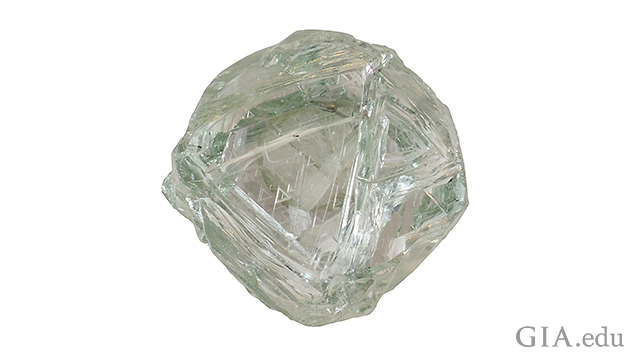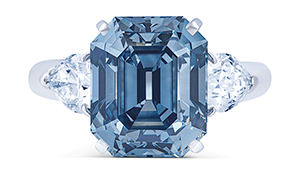GIA Researchers Reveal the Secrets to Diamond-in-a-Diamond Mystery
January 13, 2020

A diamond is a rare and beautiful gift from the earth. But a diamond within a diamond? That is an extra special gift.
Researchers in the GIA laboratory in New York recently had the opportunity to examine one of the most interesting and unique diamond crystals ever found. The crystal, dubbed “matryoshka” after the iconic Russian nesting dolls, was discovered by the Russian mining company Alrosa in Siberia in 2019. While it has several unusual characteristics, including its color, etching and internal cavity, it is the crystal that is trapped, but moves freely, inside the larger diamond that attracted a lot of interest.
“We have never seen anything like this,” said Tom Moses, GIA executive vice president and chief laboratory and research officer. “This is a truly unusual diamond, not only for the fact that there is a small diamond crystal inside and entirely detached from the host crystal, but also for the mystery of how this diamond-in-a-diamond formed.”
The GIA research team – Dr. Wuyi Wang, GIA vice president of research and development; Staff Gemologist Emiko Yazawa, Senior Analytics Technicians Stephanie Persaud and Elina Myagkaya, Senior Research Scientist Dr. Ulrika D’Haenens-Johansson and Moses – examined the 0.62 carat rough crystal using advanced instrumentation.
Based on their observations and expertise in diamond formation, they determined that over time – millions or billions of years – about 0.11 carats of diamond material dissolved away through two small etched channels that extended from the surface of the diamond to the internal cavity. The diamond material that remained formed into a small diamond crystal of 0.03 carats that is entirely detached from the host crystal.
Detailed analysis confirmed that the small internal diamond has nearly the identical trace element chemistry as its host and that when the host formed in the earth’s mantle, it was a solid diamond without the cavity.
The team was also intrigued by the natural clear green body color of the internal crystal and the “Christmas-tree” like etchings that decorated its surface. They determined that these were small, dark green radiation stains that were present in shallow fractures along its edges, which revealed that this diamond was naturally irradiated. Fluid with radioactive elements is responsible for the green body color and formation of radiation stains, and would have been the last step in decorating this crystal.
“Examining this nesting-doll diamond was a remarkable opportunity,” Moses said. “We know that most diamonds form in a melt/fluid environment, and that they often are partially resorbed and reformed from interactions with multiple types of melt/fluid materials. The opportunity to examine this special diamond-within-a-diamond added to our understanding of how diamonds form.”
A more detailed article is planned for the Lab Notes section of the Spring 2020 edition of Gems & Gemology.
Stephen Morisseau, AJP®, is director of corporate communications at GIA.


